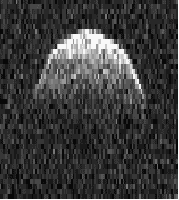|
Extraterrestrial Sample Curation Center
The (PMSCF), commonly known as the Extraterrestrial Sample Curation Center (ESCuC, 地球外試料キュレーションセンター) is the facility where Japan Aerospace Exploration Agency (JAXA) conducts the curation works of extraterrestrial materials retrieved by some sample-return missions. They work closely with Japan's Astromaterials Science Research Group. Its objectives include documentation, preservation, preparation, and distribution of samples. All samples collected are made available for international distribution upon request. Overview The conceptual studies for JAXA's curation facility begun in 2005, the specifications were decided in 2007, and the facility was completed in 2008 in time to receive the asteroid samples retrieved by the ''Hayabusa'' mission. [...More Info...] [...Related Items...] OR: [Wikipedia] [Google] [Baidu] |
Planetary Science
Planetary science (or more rarely, planetology) is the scientific study of planets (including Earth), celestial bodies (such as moons, asteroids, comets) and planetary systems (in particular those of the Solar System) and the processes of their formation. It studies objects ranging in size from micrometeoroids to gas giants, aiming to determine their composition, dynamics, formation, interrelations and history. It is a strongly interdisciplinary field, which originally grew from astronomy and Earth science, and now incorporates many disciplines, including planetary geology, cosmochemistry, atmospheric science, physics, oceanography, hydrology, theoretical planetary science, glaciology, and exoplanetology. Allied disciplines include space physics, when concerned with the effects of the Sun on the bodies of the Solar System, and astrobiology. There are interrelated observational and theoretical branches of planetary science. Observational research can involve combinations of spac ... [...More Info...] [...Related Items...] OR: [Wikipedia] [Google] [Baidu] |
Planetary Protection
Planetary protection is a guiding principle in the design of an interplanetary mission, aiming to prevent biological contamination of both the target celestial body and the Earth in the case of sample-return missions. Planetary protection reflects both the unknown nature of the space environment and the desire of the scientific community to preserve the pristine nature of celestial bodies until they can be studied in detail. There are two types of interplanetary contamination. Forward contamination is the transfer of viable organisms from Earth to another celestial body. Back contamination is the transfer of extraterrestrial organisms, if they exist, back to the Earth's biosphere. History The potential problem of lunar and planetary contamination was first raised at the International Astronautical Federation VIIth Congress in Rome in 1956. In 1958 the U.S. National Academy of Sciences (NAS) passed a resolution stating, “The National Academy of Sciences of the United Sta ... [...More Info...] [...Related Items...] OR: [Wikipedia] [Google] [Baidu] |
Molecules Detected In Outer Space
This is a list of molecules that have been detected in the interstellar medium and circumstellar envelopes, grouped by the number of component atoms. The chemical formula is listed for each detected compound, along with any ionized form that has also been observed. Background The molecules listed below were detected through astronomical spectroscopy. Their spectral features arise because molecules either absorb or emit a photon of light when they transition between two molecular energy levels. The energy (and thus the wavelength) of the photon matches the energy difference between the levels involved. Molecular electronic transitions occur when one of the molecule's electrons moves between molecular orbitals, producing a spectral line in the ultraviolet, optical or near-infrared parts of the electromagnetic spectrum. Alternatively, a vibrational transition transfers quanta of energy to (or from) vibrations of molecular bonds, producing signatures in the mid- or far-infrared. Gas ... [...More Info...] [...Related Items...] OR: [Wikipedia] [Google] [Baidu] |
Extraterrestrial Materials
Extraterrestrial material refers to natural objects now on Earth that originated in outer space. Such materials include cosmic dust and meteorites, as well as samples brought to Earth by sample return missions from the Moon, asteroids and comets, as well as solar wind particles. Extraterrestrial materials are of value to science as they preserve the primitive composition of the gas and dust from which the Sun and the Solar System formed. Categories Extraterrestrial material for study on earth can be classified into a few broad categories, namely: # Meteorites too large to vaporize on atmospheric entry but small enough to leave fragments lying on the ground, among which are included likely specimens from the asteroid and Kuiper belts as well as from the moon and from Mars. # Moon rocks brought to Earth by robotic and crewed lunar missions. # Cosmic dust collected on Earth, in the Earth's stratosphere, and in low Earth orbit which likely include particles from the present day i ... [...More Info...] [...Related Items...] OR: [Wikipedia] [Google] [Baidu] |
Astrobiology
Astrobiology, and the related field of exobiology, is an interdisciplinary scientific field that studies the origins, early evolution, distribution, and future of life in the universe. Astrobiology is the multidisciplinary field that investigates the deterministic conditions and contingent events with which life arises, distributes, and evolves in the universe. Astrobiology makes use of molecular biology, biophysics, biochemistry, chemistry, astronomy, physical cosmology, exoplanetology, geology, paleontology, and ichnology to investigate the possibility of life on other worlds and help recognize biospheres that might be different from that on Earth. The origin and early evolution of life is an inseparable part of the discipline of astrobiology. Astrobiology concerns itself with interpretation of existing scientific data, and although speculation is entertained to give context, astrobiology concerns itself primarily with hypotheses that fit firmly into existing scientific ... [...More Info...] [...Related Items...] OR: [Wikipedia] [Google] [Baidu] |
OSIRIS-REx
OSIRIS-REx (Origins, Spectral Interpretation, Resource Identification, Security, Regolith Explorer) is a NASA asteroid-study and sample-return mission. The mission's primary goal is to obtain a sample of at least from 101955 Bennu, a carbonaceous near-Earth asteroid, and return the sample to Earth for a detailed analysis. The material returned is expected to enable scientists to learn more about the formation and evolution of the Solar System, its initial stages of planet formation, and the source of organic compounds that led to the formation of life on Earth. OSIRIS-REx was launched on 8 September 2016, flew past Earth on 22 September 2017, and rendezvoused with Bennu on 3 December 2018. It spent the next several months analyzing the surface to find a suitable site from which to extract a sample. On 20 October 2020, OSIRIS-REx touched down on Bennu and successfully collected a sample. Though some of the sample escaped when the flap that should have clo ... [...More Info...] [...Related Items...] OR: [Wikipedia] [Google] [Baidu] |
101955 Bennu
101955 Bennu (provisional designation ) is a carbonaceous asteroid in the Apollo group discovered by the LINEAR Project on 11 September 1999. It is a potentially hazardous object that is listed on the Sentry Risk Table and has the highest cumulative rating on the Palermo Technical Impact Hazard Scale. It has a cumulative 1-in-1,800 chance of impacting Earth between 2178 and 2290 with the greatest risk being on 24 September 2182. It is named after the Bennu, the ancient Egyptian mythological bird associated with the Sun, creation, and rebirth. has a mean diameter of and has been observed extensively by the Arecibo Observatory planetary radar and the Goldstone Deep Space Network. Bennu was the target of the OSIRIS-REx mission which is intended to return its samples to Earth in 2023 for further study. On 3 December 2018, the OSIRIS-REx spacecraft arrived at Bennu after a two-year journey. It orbited the asteroid and mapped out Bennu's surface in detail, seeking potential samp ... [...More Info...] [...Related Items...] OR: [Wikipedia] [Google] [Baidu] |
Hayabusa2
is an asteroid sample-return mission operated by the Japanese state space agency JAXA. It is a successor to the ''Hayabusa'' mission, which returned asteroid samples for the first time in June 2010. ''Hayabusa2'' was launched on 3 December 2014 and rendezvoused in space with near-Earth asteroid 162173 Ryugu on 27 June 2018. It surveyed the asteroid for a year and a half and took samples. It left the asteroid in November 2019 and returned the samples to Earth on 5 December 2020 UTC. Its mission has now been extended through at least 2031, when it will rendezvous with the small, rapidly-rotating asteroid . ''Hayabusa2'' carries multiple science payloads for remote sensing and sampling, and four small rovers to investigate the asteroid surface and analyze the environmental and geological context of the samples collected. Mission overview Asteroid 162173 Ryugu (formerly designated ) is a primitive carbonaceous near-Earth asteroid. Carbonaceous asteroids are thought to p ... [...More Info...] [...Related Items...] OR: [Wikipedia] [Google] [Baidu] |




.jpg)

